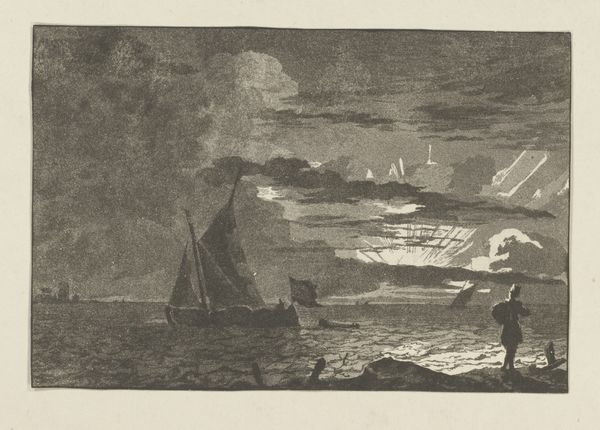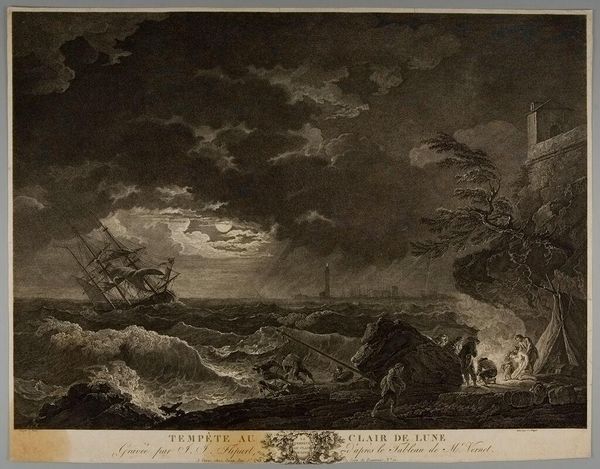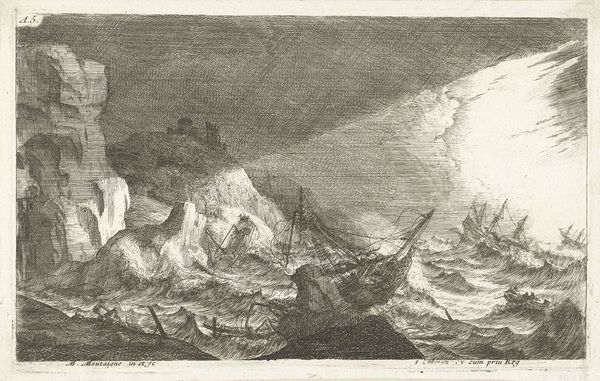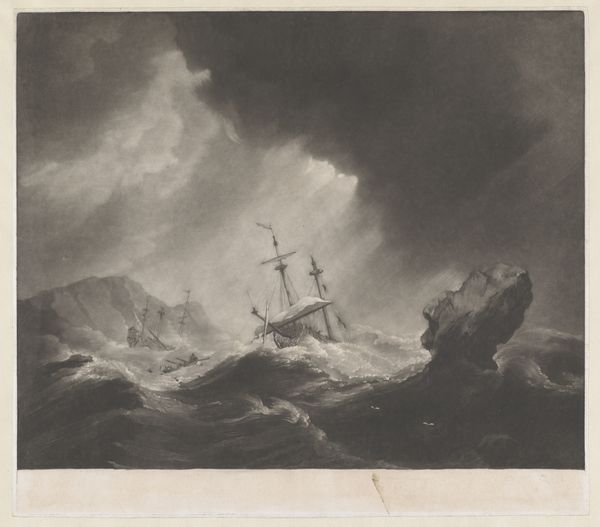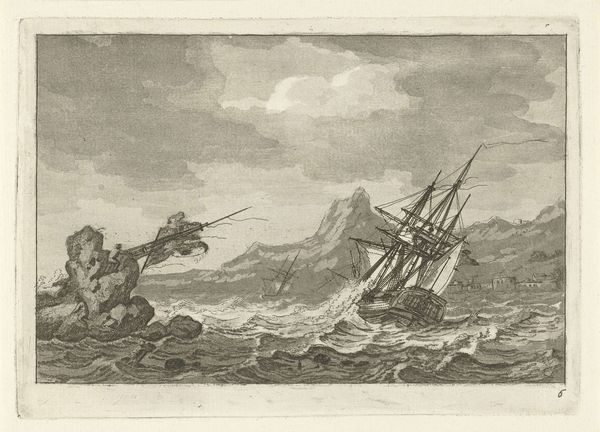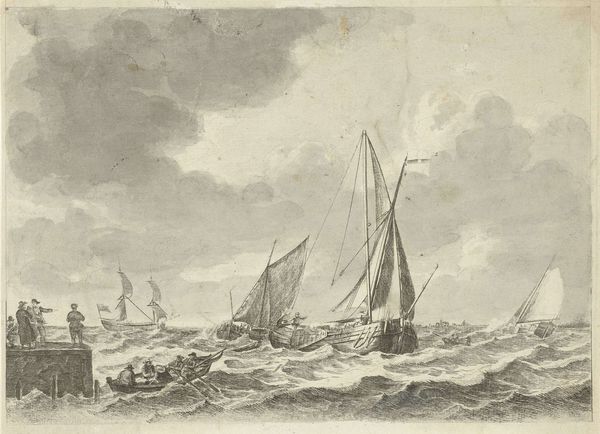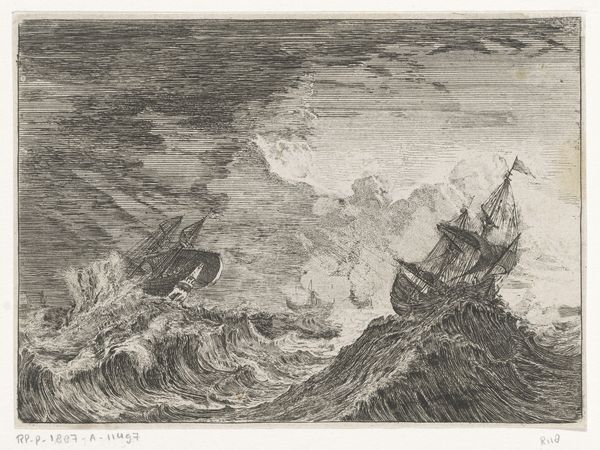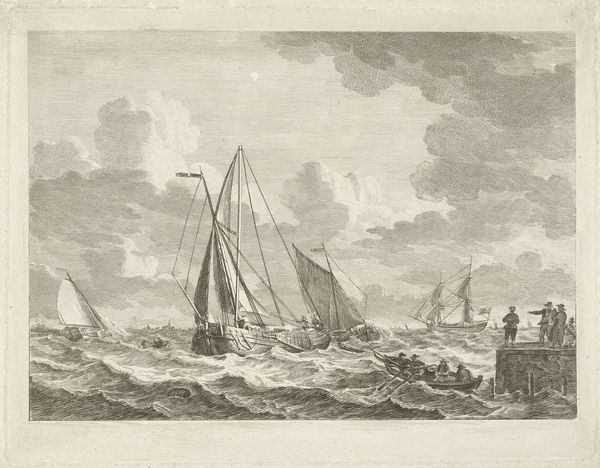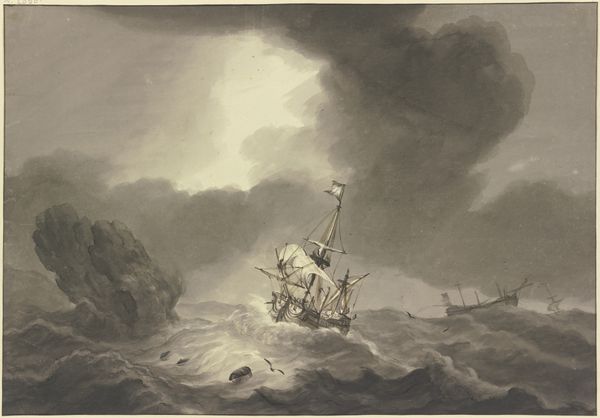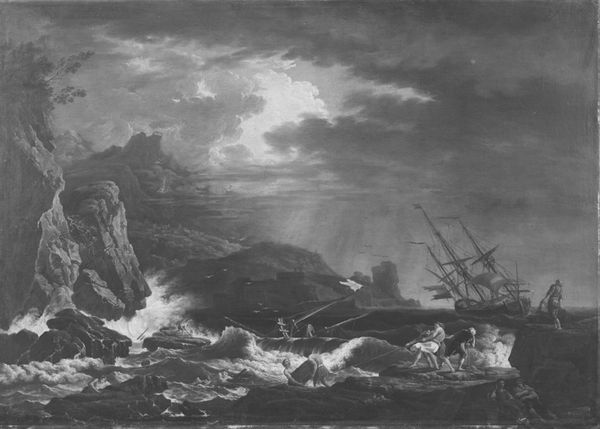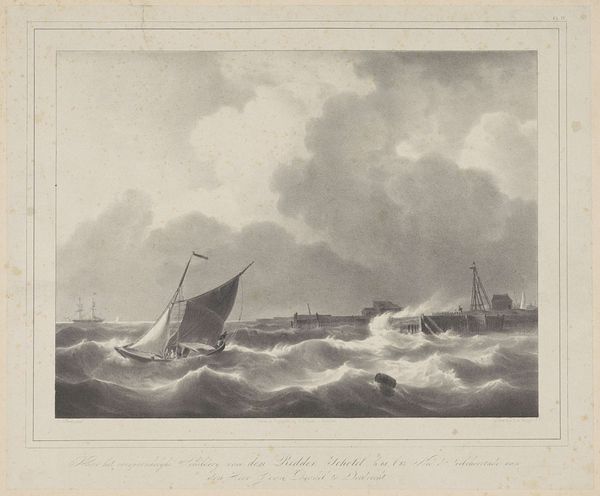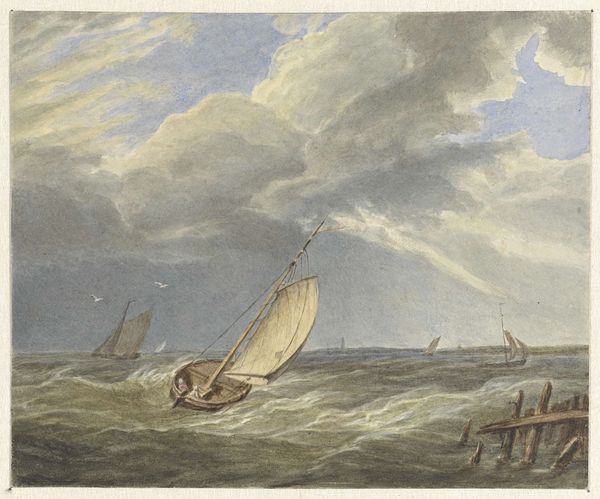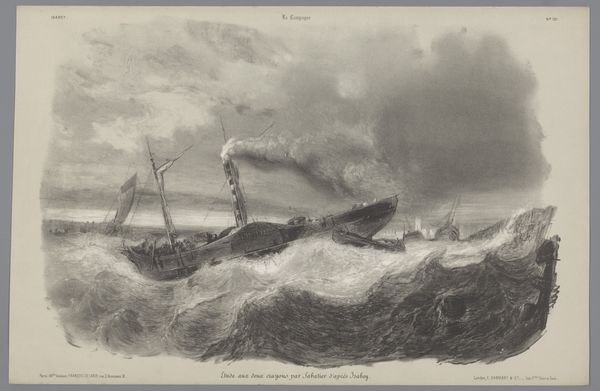
Dimensions: height 94 mm, width 132 mm
Copyright: Rijks Museum: Open Domain
Curator: Standing before us is “Ship in Distress at Night,” an 1851 etching and engraving by Johann Wilhelm Kaiser. Editor: Immediately, I am struck by its tumultuous energy; a dance of light and darkness reflecting the precarity of human endeavor against nature's overwhelming forces. Curator: Kaiser masterfully uses the contrast between the moon's soft glow and the roiling dark waves to create depth and a sense of foreboding. Note how the composition leads our eye from the jagged cliffs on the left to the distressed vessel. Editor: Absolutely, and beyond the purely aesthetic considerations, think about the historical context! Maritime trade was booming, yet incredibly dangerous. Images like this capture a collective anxiety about human vulnerability and exploitation by sea, and even serve as a reminder about those lost to the transatlantic slave trade and similar injustices committed at sea. Curator: The diagonal lines of the ship’s masts against the horizontal waves generate visual tension; the very structure of the image emphasizes imbalance. I’m intrigued by Kaiser's skill in suggesting texture, from the rough rocks to the frothy water. The variations in line thickness creates a visual rhythm. Editor: This isn’t simply an exercise in representing a dramatic scene. The tiny figures in the boat escaping the wreckage tell a story of resilience, of communities grappling with ecological forces while their economies demanded trade across water. This resonates powerfully when thinking about current global climate crises and those displaced. Curator: A valid observation, and I must say, viewing “Ship in Distress at Night” again allows one to consider the stark contrast that allows for visual harmony within its framework. The way he manipulated light and line weight elevates what could have been a simple seascape into an investigation of pictorial balance. Editor: By interweaving technical proficiency with narrative weight, the artist compels us to consider larger questions of exploitation and human strength when considering how communities were structured across water. It also forces us to meditate on precarity from our current historical moment and make connections to historical precedents of crisis.
Comments
No comments
Be the first to comment and join the conversation on the ultimate creative platform.
